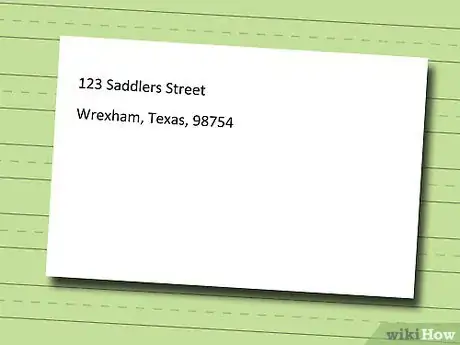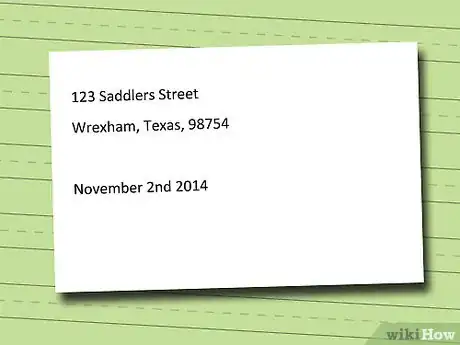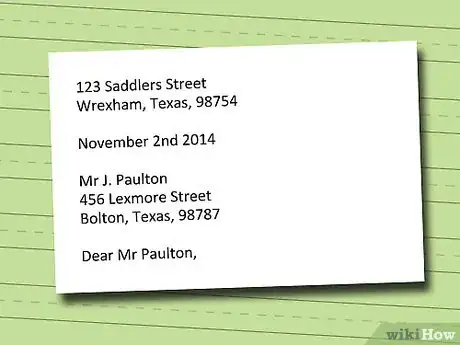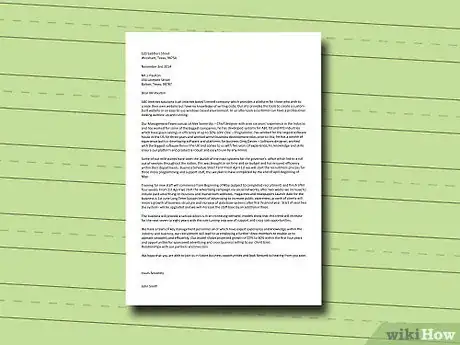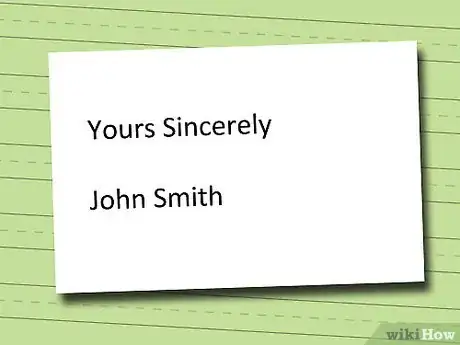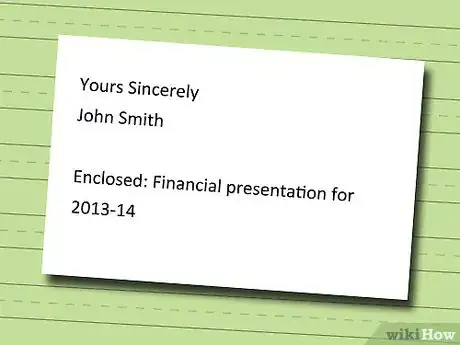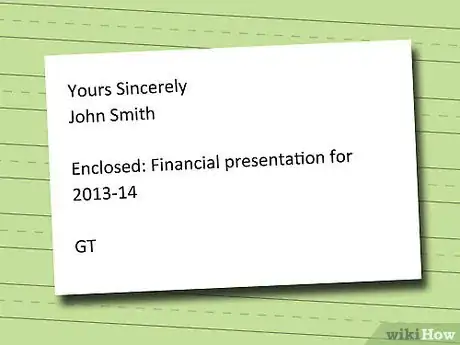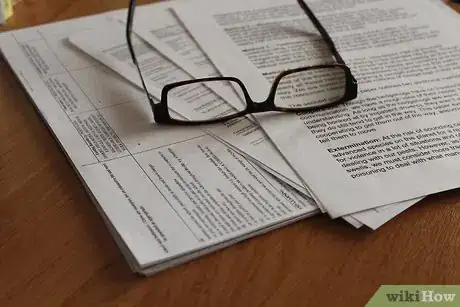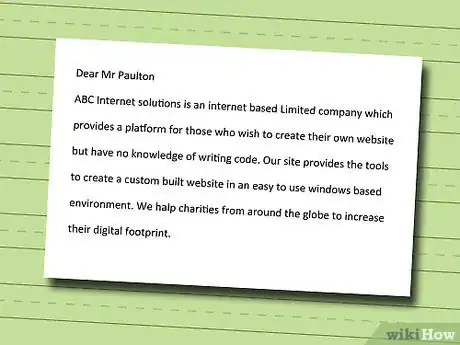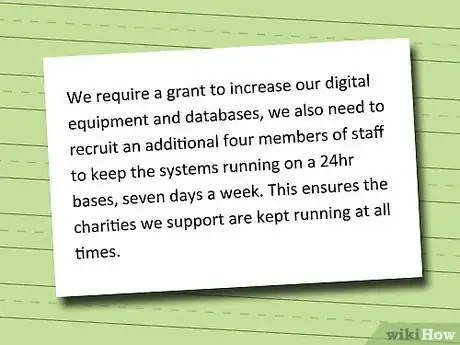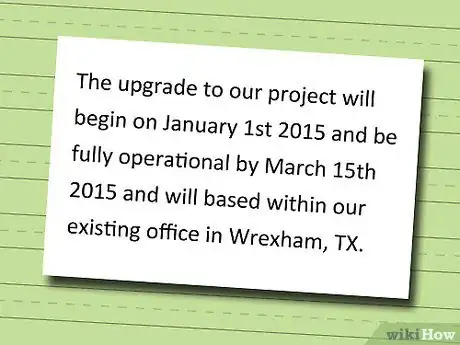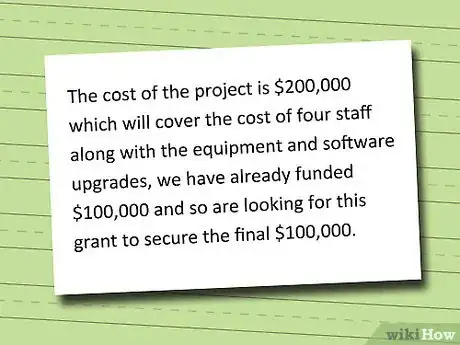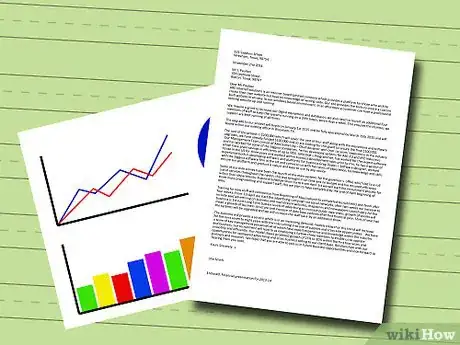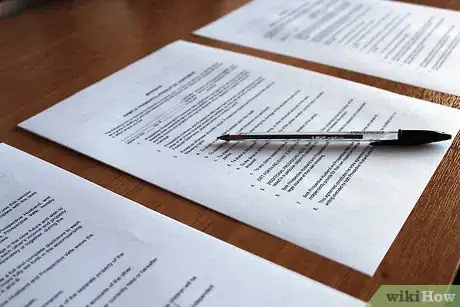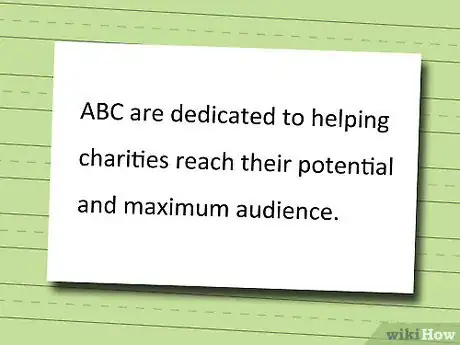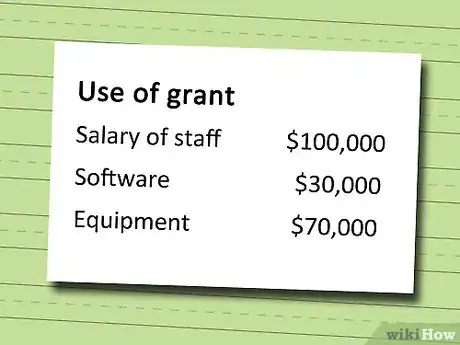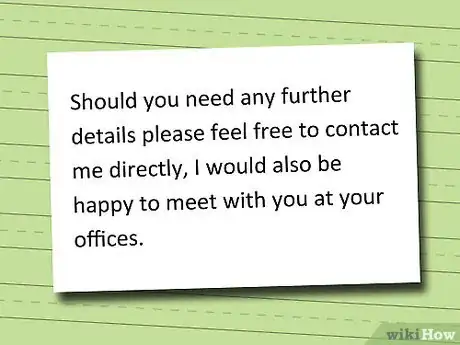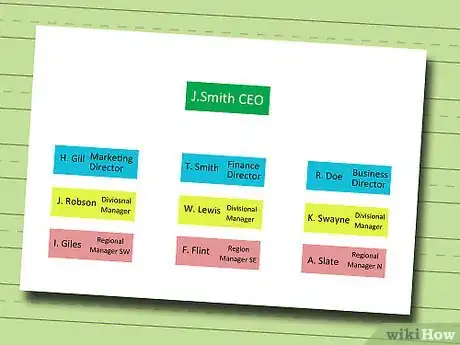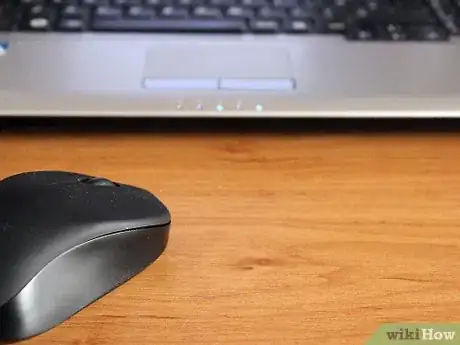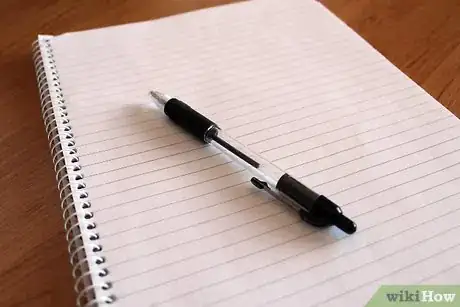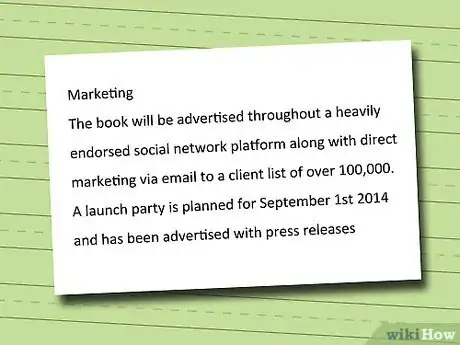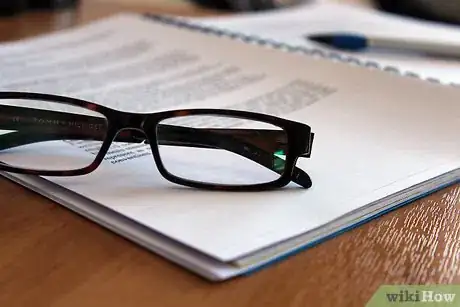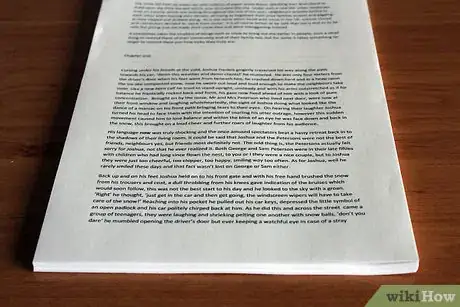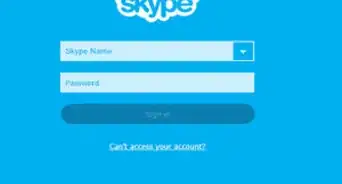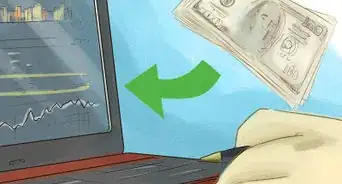This article was co-authored by Dave Labowitz and by wikiHow staff writer, Christopher M. Osborne, PhD. Dave Labowitz is a Business Coach who helps pre-entrepreneurs, solopreneurs/entrepreneurs, and team leaders start, scale, and lead their businesses and teams. Before beginning his coaching career, Dave was a startup executive who spent over a decade building high-growth companies. Dave’s “path less traveled” life includes adventures such as dropping out of high school, co-authoring a book in the Smithsonian Institute, and getting his MBA at Pepperdine’s Graziadio Business School.
There are 9 references cited in this article, which can be found at the bottom of the page.
This article has been viewed 120,394 times.
A proposal letter is a professional letter that states, in an abbreviated form, why an organization, institution, or company should support a professional venture of yours. You may write a proposal letter for a number of reasons—in particular, you may be requesting a grant, requesting a business loan, or requesting that a publisher accepts your book idea.[1] There are general formats and specific arguments you should make in each instance. Here's what you should include.
Steps
Formatting the Letter
-
1Write the sender's address at the top of the letter. In the upper left corner of the letter, write your your street address, city, state, and zip code. The street address should be on one line and the rest of the address should be on the following line and single-spaced.
- You do not need to include your name or title in the return address.
- Do not type out the return address at the top of the letter if you are using paper with a formal letterhead that already includes the address.
-
2Include the current date. Double-space after the return address and type the current date in month-day-year format. The month should be spelled out, but the day and year should be represented by numerical values.
- The date should appear in the upper left corner of the letter.
- If you are not using a return address, the date should be the first piece of information on the letter.
Advertisement -
3Type the recipient's address. Double-space after the date and type the recipient's personal title, name, and address. Include the street address, city, state, and zip code.
- The personal title and name appears on one line, the street address on the next, and the rest of the address follows on the last line. The entire block should be left-aligned and single-spaced.
- It is always best to write to a specific individual at a company by name instead of writing a general letter to anyone who may read it.
-
4Include an appropriate salutation. Double-space after the recipient's address and type the salutation "Dear" followed by the recipient's personal title and last name.
- If you do not know the recipient's gender, skip the personal title and use the recipient's full name.[2]
- Follow the salutation with a colon.
-
5Write the body of your letter. The exact content of your proposal letter may vary depending on the type of proposal you plan to write. The format of the letter should remain the same for each type, though.
- Single-space and left-justify each paragraph.
- Leave a blank line in between paragraphs.
- Do not indent the first line of your paragraph.
-
6Use an appropriate closing and signature. Double-space after the final body paragraph and include a formal closing, followed by a comma. Hit the "Enter" key four times before typing your full name and professional title.
- Sign your name above the typed version on your letter and below the closing.
- Possible closings to use include:
- Thank you
- Sincerely
- Regards
- Best regards
- Faithfully
-
7Mention any enclosures. If you send any enclosures with your proposal letter, like a resume with an employment proposal or financial information with a business proposal, indicate this by typing "Enclosures" one line below your typed name.[3]
- You also have the option of listing each document you are enclosing below the "Enclosures" label.
-
8Include typist initials, when applicable. If someone else typed the letter, include those initials on the left side of the letter on the final line.
- Do not include typist initials if the person signing the letter is the same person who wrote it.
Writing a Grant Proposal Letter===
-
1Review eligibility guidelines. Most public and private organizations that issue grants for research or other projects will have a list of eligibility requirements. You must meet these requirements and let the organization in question know that you meet those requirements, as well.[4]
- Instead of dedicating an entire paragraph to explaining how you meet each requirement, weave this information into the body of your letter.
- For instance, if the organization has certain requirements concerning the types of projects the money can be used for and separate requirements about how that money will be allotted, describe these issues in separate paragraphs instead of trying to cram all the information into one.
-
2Introduce your organization. If you are not in regular contact with the grant organization, you should introduce your organization in the first body paragraph of your letter.
- State the name of your organization, what it does, why it does it, and who benefits from your organization's work.
- If you have had previous contact with the grant agency or organization, mention any changes or developments your organization has made since you were last in contact.
-
3Explain what you need the grant for and why this is important.[5] In your next body paragraph, you should explain what you are trying to accomplish and for whom you are trying to accomplish it.
- You should also explain why your research, charitable effort, or venture is important and what sort of outcome you are expecting to have.
-
4Provide a setting for the project. In another paragraph, you should include information about the timeline your project will require and, when applicable, the place the project will occur at.
- State when the project will begin and how long you expect it to run.
- Some grants are location-specific. If this is true of the grant you apply for, you will need to indicate where your organization is based, the geographic area that will be studied during your project, or the geographic area that will benefit from the project.
-
5Mention how much the project will cost and how much grant money you are requesting. You will need to state how much your project will cost overall so that the grant organization can get an idea of how crucial its funding is.
- If you are applying for a grant without a pre-determined funding amount, you should write how much money you are requesting.
- Include a cost-benefit analysis within your application.
-
6Include any additional information requested. The grant agency or organization may not require any additional information, but if additional documents are needed, you will need to include them as enclosures.
- Additional documents may include financial budgets, past financial records, and past records indicating the success of similar projects performed by your organization in the past.
Writing a Business Financing Proposal Letter
-
1Refer to any prior contact. If your business is already established and has a previous relationship with the lender or funder you are contacting, mention that prior contact.
- If you interacted with a specific contact at the company, men`ton that individual by name.
-
2Discuss your company. Provide a brief summary of your business so that the funder can get a good understanding of who you are and what you do.
- Include your mission statement and a short description of the products or services your company provides.[6]
- To make your case more convincing, you should also include the number of customers served, the number of employees, and information about any administrative boards.
-
3Describe the amount of funding you need from the funder. Explain why you need financial help from the funder and how much funding you are requesting.
- Mention what, specifically, the funding will be used for.
- You may need to include brief budget data that spells out how funds have been used in the past and projections on how the funds will be used this time around. This additional data may need to be included as a separate attachment or in the body of the letter.
- Regardless of how much information you include in the body of the letter itself, you should always state the total cost of the project and how much of that cost will be covered by the funder's support.
-
4Explain how you will use the funding. You need to provide enough information about how funds granted by the funder will be used to make the prospective funder curious.
- This should only be a summary. With a full-scale proposal, this information can take pages. This information should take no more than a half page when writing a shorter proposal letter, however.
-
5Offer to provide additional details. Since a proposal letter is shorter than a full proposal, you should offer to provide additional detail if it is requested.
- You can also offer to meet with the funder personally or via the telephone.
-
6Include any necessary enclosures. If the prospective funder requires additional documentation, include it in the envelop as an enclosure.
- Possible documentation includes a list of board members, copies of your tax documents, financial documents, and resumes of key staff members.
Writing a Book Proposal Letter
-
1Check the submission guidelines. Every publishing agency and publisher has its own set of submission guidelines. These can usually be found on the publisher's website, but if not, you should call or write to the company and request a copy of those guidelines before proceeding.
- Submission guidelines outline the types of books a publisher or agent will accept, as well as the format the proposal letter should be in when submitted.
-
2Defend your idea. The first part of your book proposal is the query letter, in which you need to convince the agent or publisher that the novel you want to submit should be successful in the market.
- Write a brief but intriguing summary of your book in the first paragraph. In the case of fiction or creative non-fiction, outline the your narrative and describe your main characters.[7]
-
3State whether or not the book is finished. Note that some publishers will not accept proposals for unfinished works.
- Write a second paragraph describing the essentials of the book. This includes the genre, word count, and the market the book should be pitched to. Also note any images that accompany the book.
-
4Describe the target market. Explain who your target market is and provide statistics about what that target market looks for as it applies to your book.
- Thoroughly describe the demographic your book is aimed at and make sure that your statistics address that demographic in specific, rather than general, terms.
- Perform a competitive analysis.[8] Every book has competitors. List a few main competitors to your book and explain how well these competitors do in the market as well as why your book will offer something its competitors do not offer.
-
5Provide biographical information. Describe yourself and explain why you are the perfect person to write this book.[9]
- Mention any writing experience and publishing experience you have.
- Also mention any experience you have with the subject matter your book deals with. For instance, if you write a book about fashion and had experience as a fashion designer, include that in your letter.
-
6Summarize your marketing plan. Provide specific information about what your plans are concerning the promotion of your book once it gets published.
- Be specific, not general. Do not state what you are willing to do but what you will do.
- Possible forms of marketing include professional blogs, book signings, and professional conferences.
-
7Include a synopsis. You will usually need to include a one to two page synopsis describing your book in full detail. This will be included as an enclosure, not as part of the main body of the letter.
- Provide a full summary of the entire plot and purpose of your book. Include all details about the plot and significant sub-plots.
- Write the synopsis in third-person.
-
8Enclose a sample table of contents, when requested. Some publishers will request a table of contents if you are submitting a proposal for a nonfiction book.
- If you do not have a table of contents, you may need to provide a brief summary of each chapter.
-
9Enclose an extract, when requested. Some publishers and agents will request the first few pages or chapters of your book. Others may only ask for an extract without specifying which part of the book the extract needs to be pulled from.
- Regardless, the extract should be an example of your strongest writing.
Expert Q&A
-
QuestionHow do you write a financial proposal?
 Dave LabowitzDave Labowitz is a Business Coach who helps pre-entrepreneurs, solopreneurs/entrepreneurs, and team leaders start, scale, and lead their businesses and teams. Before beginning his coaching career, Dave was a startup executive who spent over a decade building high-growth companies. Dave’s “path less traveled” life includes adventures such as dropping out of high school, co-authoring a book in the Smithsonian Institute, and getting his MBA at Pepperdine’s Graziadio Business School.
Dave LabowitzDave Labowitz is a Business Coach who helps pre-entrepreneurs, solopreneurs/entrepreneurs, and team leaders start, scale, and lead their businesses and teams. Before beginning his coaching career, Dave was a startup executive who spent over a decade building high-growth companies. Dave’s “path less traveled” life includes adventures such as dropping out of high school, co-authoring a book in the Smithsonian Institute, and getting his MBA at Pepperdine’s Graziadio Business School.
Business Coach Explain exactly how you'll use the funding you're asking for. If you're applying to a bank, they're automatically going to make you explain how you're going to use the money you're requesting. If you're raising money (like equity financing from a VC), they'll want to see that you have a cohesive plan.
Explain exactly how you'll use the funding you're asking for. If you're applying to a bank, they're automatically going to make you explain how you're going to use the money you're requesting. If you're raising money (like equity financing from a VC), they'll want to see that you have a cohesive plan. -
QuestionWhat should a financial proposal include?
 Dave LabowitzDave Labowitz is a Business Coach who helps pre-entrepreneurs, solopreneurs/entrepreneurs, and team leaders start, scale, and lead their businesses and teams. Before beginning his coaching career, Dave was a startup executive who spent over a decade building high-growth companies. Dave’s “path less traveled” life includes adventures such as dropping out of high school, co-authoring a book in the Smithsonian Institute, and getting his MBA at Pepperdine’s Graziadio Business School.
Dave LabowitzDave Labowitz is a Business Coach who helps pre-entrepreneurs, solopreneurs/entrepreneurs, and team leaders start, scale, and lead their businesses and teams. Before beginning his coaching career, Dave was a startup executive who spent over a decade building high-growth companies. Dave’s “path less traveled” life includes adventures such as dropping out of high school, co-authoring a book in the Smithsonian Institute, and getting his MBA at Pepperdine’s Graziadio Business School.
Business Coach Explain how you're going to be spending the money and how long the money is going to last. This is called "runway." If you request $100,000 total and you plan on burning through $10,000 a month, you'd have 10 months worth of runway. It's very important for the financier to know how many months of runway their investments are buying them before you get profitable.
Explain how you're going to be spending the money and how long the money is going to last. This is called "runway." If you request $100,000 total and you plan on burning through $10,000 a month, you'd have 10 months worth of runway. It's very important for the financier to know how many months of runway their investments are buying them before you get profitable. -
QuestionHow do you start a proposal letter?
 wikiHow Staff EditorThis answer was written by one of our trained team of researchers who validated it for accuracy and comprehensiveness.
wikiHow Staff EditorThis answer was written by one of our trained team of researchers who validated it for accuracy and comprehensiveness.
Staff Answer wikiHow Staff EditorStaff AnswerStart by briefly introducing yourself and the topic of your proposal. The opening paragraph should be clear and concise, since it will make a first impression on your reader and give them a sense of what your proposal is about.
wikiHow Staff EditorStaff AnswerStart by briefly introducing yourself and the topic of your proposal. The opening paragraph should be clear and concise, since it will make a first impression on your reader and give them a sense of what your proposal is about.
References
- ↑ https://www.bidsketch.com/blog/client-proposals/write-proposal-letter/
- ↑ http://www.mit.edu/course/21/21.guide/letters.htm
- ↑ http://www.mit.edu/course/21/21.guide/letters.htm
- ↑ https://writingcenter.unc.edu/tips-and-tools/grant-proposals-or-give-me-the-money/
- ↑ http://jlc.london/wp-content/uploads/2015/02/Guidelines-for-writing-a-good-proposal-letter.pdf
- ↑ https://www.bidsketch.com/blog/client-proposals/write-proposal-letter/
- ↑ https://nybookeditors.com/2015/12/how-to-write-a-darn-good-query-letter/
- ↑ http://janefriedman.com/2012/11/09/start-here-how-to-write-a-book-proposal/
- ↑ https://nybookeditors.com/2015/12/how-to-write-a-darn-good-query-letter/
About This Article
If you need to write a grant proposal letter, open the letter by introducing your organization, including what it does and who benefits from your work. Explain what your organization will do with the grant and why this work is important, as well as a basic timeline for your project, how much the project will cost, and how much grant money you are requesting. You should also review all of the eligibility guidelines involved with the grant, and explain in the letter how you meet those requirements. To write a business financing proposal letter, keep reading!
